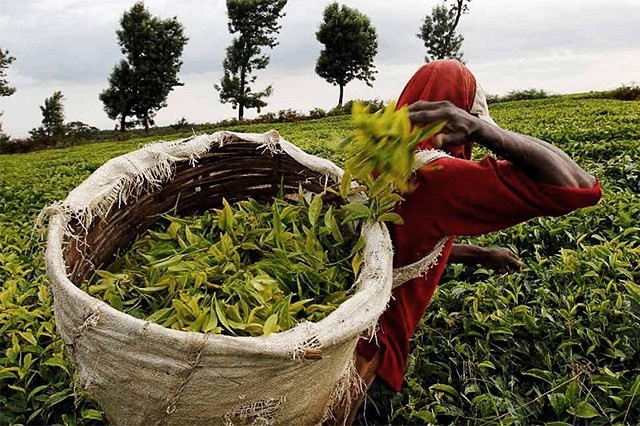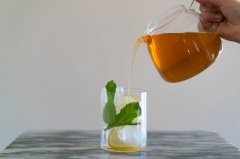What are the representative types of black tea, the ranking of black tea producing areas in the world and the story of historical development?
The history of black tea, as we know today, was discovered in China in the 17th century, which can be said to be a lucky accident. An army from Jiangxi province stopped temporarily in Fujian province and camped near a tea factory. This delays production, allowing the leaves to stay in the sun longer, oxidizing them into a crimson color. Up to this time, oolong tea and green tea are favorite and consumed in the West. However, black tea is cheaper, retained, and improved over time. As a result, British and Dutch businessmen began to buy it. The British have found a variety of the plant in India that produces a stronger flavor, higher caffeine content and more cost-effective. Similarly, the British have found fertile soil to grow tea in Sri Lanka and Africa. The temperature and topography of these countries are particularly suitable for the production of strong teas such as Earl Grey Tea and White Milk Tea. Black tea was initially sold to wealthy aristocrats at high prices, and gradually became a symbol of social affluence. Over time, the price of tea has fallen, and tea drinking has become more democratic in cultures around the world. Even today, black tea exported to and sold in the United States still comes from China, Sri Lanka, India and Africa. Black tea and mixed tea species Assam black tea grows in the northeastern Indian state of Assam. This black tea is bold, fragrant and smooth. The first mouthful is full-bodied with tannins and a rich finish with a taste of roasted malt. Darjeeling black tea Darjeeling Tea is called "champagne in tea" among tea lovers. The first (February-May), the second (May-June), the monsoon (July-September) and autumn (October-November). The first Darjeeling Tea is the most fragrant and fresh. However, for black tea, full-bodied musk wine is very popular.

Ceylon black tea is selected from the highest quality tea garden in Sri Lanka. It has a mellow taste and deep color. Ceylon black tea has subtle floral and chocolate flavors, as well as strong citrus flavors, depending on the grade. Kenyan black tea is a strong and attractive blend of spices cardamom and anise, fresh citrus and cream chocolate. English, Scottish or Irish breakfast teas all contain different kinds of Assam, Darjeeling, Ceylon and Kenyan black tea. Traditionally, breakfast tea in Scotland and Ireland is stronger than that in England. Different combinations can enhance intensity, caffeine content and bass. Darjeeling black tea tastes refreshing, while Ceylon tea has a soothing sweet taste. At the same time, tea is stronger in Assam and Kenya. These mixtures are best reinforced with milk or cream. Medicinal properties of black tea the antioxidants in black tea help prevent and reduce inflammation, cardiovascular disease and kidney failure. Antioxidants also help lower high cholesterol levels, high blood pressure and help you lose weight. Studies have shown that black tea has antibacterial properties, promotes the growth of beneficial bacteria in the digestive tract and reduces the risk of type 2 diabetes, inflammatory bowel disease and obesity. A healthy digestive system can also improve immunity and resistance to infection. Choose black tea that suits you. If you like mild and refreshing tea, then monsoon tea is very suitable for you. With caffeine and intense aromas of roasted almonds, this dark golden black tea is made from the finest orange and white. The light, fresh and strong taste of lemon Canty is the perfect choice for cold wine. A light citrus flavor complements the deep orange wine. Served chilled, Ceylon peaches, apples, apricots and peaches are perfect for hot summer days with delicate pink tones and sliced dried fruit. The subtle and mild caffeine content of its licorice root and strawberries also make it an excellent aperitif or cocktail.
Important Notice :
前街咖啡 FrontStreet Coffee has moved to new addredd:
FrontStreet Coffee Address: 315,Donghua East Road,GuangZhou
Tel:020 38364473
- Prev

Guide to the perfect and correct brewing method of black tea sharing the different formula between Hot Tea, HK Style and ordinary milk tea
Tea is one of the most respected drinks in the world and has a special status in many different cultures. Many of its health benefits also make this refreshing drink a staple in many diets. But before you make yourself a cup of tea, let's learn more about the differences of black tea. What makes it taste so unique?
- Next

How many banks in Starbucks stores? Starbucks screening stores the coolest Starbucks stores in the world.
A year later, the inventory of Starbucks 2021's coolest stores is back! As the largest coffee chain in the world. Starbucks has more than 32000 stores in 83 countries around the world. What are the eye-catching designs in these stores? This time we look at the world and look for the coolest Starbucks store in the world. Starbucks selected flagship store in Tianjin Henglong Square
Related
- The milk tea cup becomes smaller?! Overlord Tea Girl launches a new "Return to Yunnan" series
- Accused of selling counterfeit and high-priced coffee beans! Well-known boutique coffee brand "Oukelao" bowed and apologized!
- How to make espresso dumplings? Can I eat coffee and glutinous rice balls together?
- Save the unformed and stagnant powder cakes in one second! What is the problem with stagnant water in the powder bowl of the espresso machine?
- What does hand-brewed coffee stop mean? Why is it not recommended to make coffee by hand?
- Is it normal to smell like coffee? Why does coffee smell like alcohol? What's wrong with the strong smell of cold extract ice dripping ice brewed coffee?
- How to solve the problem that hand-brewed coffee extraction takes too long? Why is the water flowing so slowly when making coffee?
- The main points of making Australian white coffee, the proportion details, how does Australian white properly foam and blend the flowers?
- Can ice water make cold extract coffee? What is the difference between room temperature water and ice water for making cold coffee?
- What milk is best for making latte and white Dirty coffee? What is the difference between different brands of fresh milk and pure milk for making coffee?

